Uygur faces are finding their way to movie screens, phones, and billboards across China. Members of the ethnic minority group have facial features that Chinese brands have deemed “attractive,” creating opportunities for talented Uygurs to break into the entertainment business as singers, models and TV stars.
One of the most famous Uyghur stars may be Dilraba Dilmurat, an actress who starred in the popular series “Swords of Legends”, and who played the lead role in the drama “The King’s Woman.” Fellow Uyghur actress Gulnezer Bextiyar was recently named a Fendi brand ambassador – the first Chinese ambassador for the luxury brand.
Click to Gallery
Uygur faces are finding their way to movie screens, phones, and billboards across China. Members of the ethnic minority group have facial features that Chinese brands have deemed “attractive,” creating opportunities for talented Uygurs to break into the entertainment business as singers, models and TV stars.
Like other Uygurs, both Dilraba and Gulnezer hail from the Xinjiang Uyghur Autonomous Region. Located at the northwest edge of China, the region is home to the largest population of Uygurs. The ethnic group has Turkic roots and speak a language that’s more similar to Turkish than Mandarin. Their script is derived from Arabic and their physical appearances resemble central Asians more than the Han ethnic majority that make up China.
Demand for men and women who share the same Eurasian characteristics as Gulnezer have been on the rise lately according to Dengyang Liu, founder of Fun Models, an online platform that connects models, actors and photographers to Chinese clients. Though he cautions that Han Chinese still far outnumber the number of Uygur models, many of his Chinese clients are “looking for a face that have some Asian characteristics, but also have some kind of white Europeanness to it.”
What’s driving this demand? For Dengyang, it’s nothing new. He likens it to patterns he’s seen in other Asian countries, especially as cities become increasingly cosmopolitan. “Hong Kong, Taiwan, S. Korea, even Thailand…basically, faces with mixed Eurasian features were used as a symbol[s] of a changing fusion trend in aesthetic standards,” says Dengyang.
A 2012 McKinsey survey of this group found that “this generation of Chinese consumers is the most Westernized to date.” In terms of consumption habits, Generation 2 respondents were more likely to be loyal to brands, view expensive items as “better”, and get satisfaction out items that signify better taste or higher status.
We don’t have to look far to see other examples of the same experience. In the past four decades, S. Korea has seen explosive growth, joining the trillion-dollar club of world economies in 2004.

Dilraba Dilmurat

Gulnezer Bextiyar
Like other Uygurs, both Dilraba and Gulnezer hail from the Xinjiang Uyghur Autonomous Region. Located at the northwest edge of China, the region is home to the largest population of Uygurs. The ethnic group has Turkic roots and speak a language that’s more similar to Turkish than Mandarin. Their script is derived from Arabic and their physical appearances resemble central Asians more than the Han ethnic majority that make up China.

Dilraba Dilmurat
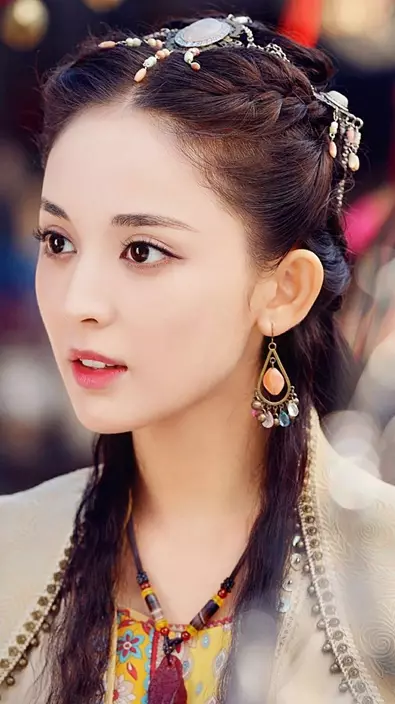
Gulnezer Bextiyar
Demand for men and women who share the same Eurasian characteristics as Gulnezer have been on the rise lately according to Dengyang Liu, founder of Fun Models, an online platform that connects models, actors and photographers to Chinese clients. Though he cautions that Han Chinese still far outnumber the number of Uygur models, many of his Chinese clients are “looking for a face that have some Asian characteristics, but also have some kind of white Europeanness to it.”

Uyghur model Parwena Dulkun has found success with brands in China

Parwena Dulkun
What’s driving this demand? For Dengyang, it’s nothing new. He likens it to patterns he’s seen in other Asian countries, especially as cities become increasingly cosmopolitan. “Hong Kong, Taiwan, S. Korea, even Thailand…basically, faces with mixed Eurasian features were used as a symbol[s] of a changing fusion trend in aesthetic standards,” says Dengyang.
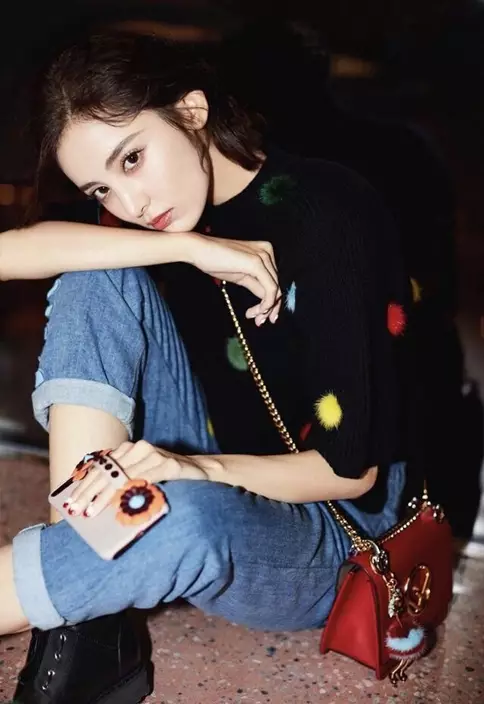
Gulnezer Bextiyar

Gulnezer Bextiyar
The power of the purse
In many ways, the shift in beauty standards correlates to a rise in purchasing power. Increased disposable income is a calling card for international brands looking to take advantage of the new market. The brands bring their own standards for beauty, revealing the Western bias in defining beauty, even in local cultures.
China’s first-tier cities have grown at breakneck speed in the past few decades, creating a new generation of Chinese with disposable income and increasing exposure to international standards of beauty. Consulting firm McKinsey has dubbed this new middle class “Generation 2." Born during China’s period of economic reform and opening up to the world, this generation accounted for nearly 15 percent of urban consumption in 2012. This number is expected to rise to 35 percent in 2022.

According to survey data from McKinsey, the "Generation 2" group of Chinese consumers are the most Westernized to date / source: McKinsey
A 2012 McKinsey survey of this group found that “this generation of Chinese consumers is the most Westernized to date.” In terms of consumption habits, Generation 2 respondents were more likely to be loyal to brands, view expensive items as “better”, and get satisfaction out items that signify better taste or higher status.
As this generation’s spending habits mirror those found in the West, foreign faces have also become more common in Chinese media. Chinese audiences are accustomed to seeing “more international-themed faces or stories… even the 'zhibo' video stuff that’s been popular in China in the past two years,” says Dengyang.

Dilraba Dilmurat

Dilraba Dilmurat
We don’t have to look far to see other examples of the same experience. In the past four decades, S. Korea has seen explosive growth, joining the trillion-dollar club of world economies in 2004.
The 1990s spawned K-pop, one of the most influential factors in shaping the country’s beauty standards. As Patricia Marx from the New Yorker puts it, the K-pop phenomenon “shapes not only what music you should listen to, but what you should look like while listening to it.”
Many of the K-pop stars share similar characteristics: fair skin, double eyelids and a small face. Koreans go to great lengths to replicate these looks, as the country has one of the highest rates of plastic surgery in the world. Though some argue that these procedures produce beauty results that are universally appealing, these are also the same beauty standards that dominant Western culture.

Dilraba Dilmurat

Dilraba Dilmurat

Dilraba Dilmurat

Dilraba Dilmurat

Gulnezer Bextiyar
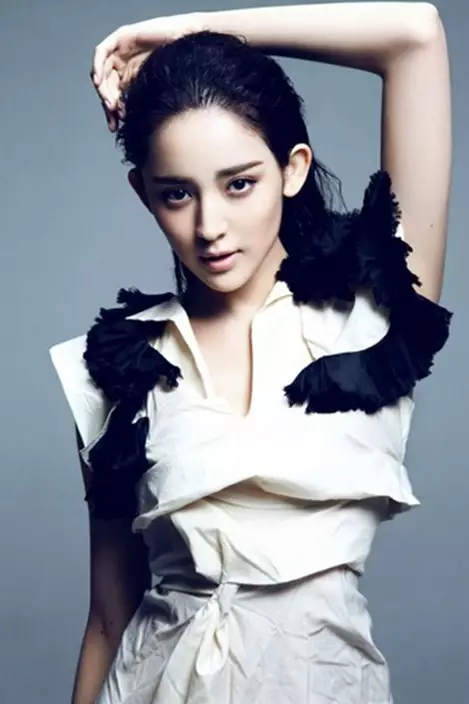
Gulnezer Bextiyar
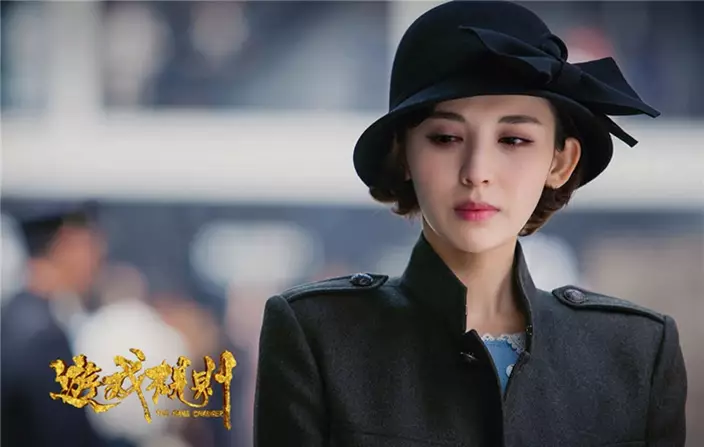
Gulnezer Bextiyar

Parwena Dulkun

Parwena Dulkun

Parwena Dulkun

Parwena Dulkun
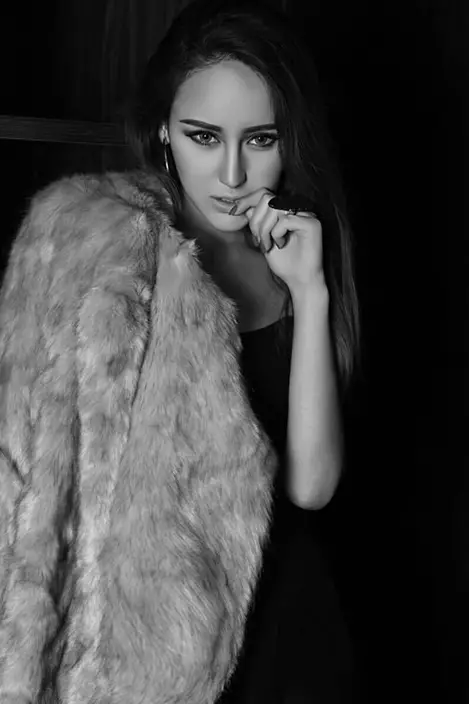
Parwena Dulkun
NEW YORK (AP) — Arenas are full, the NHL is a fixture on TV screens across North America, highlight-reel goals are talking points on a near-daily basis and “The Pat McAfee Show” even has a segment called “Hockey is Awesome."
Piece it all together, and more eyes are on the puck than ever before with the playoffs beginning this weekend.
Business is booming for the NHL, which has bounced back in a major way from the pandemic. Backstopped by new media rights deals, digital dasher boards and helmet and jersey ads, and buoyed by an overlap of generational stars, ratings are up, attendance set a record and revenue is at an all-time high — an estimated $6.2 billion annually.
“The league is going through a bit of a renaissance,” said Tom Gargiulo, chief marketing officer at Bodyarmor, whose deal to be the league's sports drink is the latest sponsorship agreement inked in recent years. “This sport is moving into the next phase of its evolution and is on a tremendous trajectory.”
Commissioner Gary Bettman says it starts with the game on the ice, which he believes has “never been more exciting, more competitive, more skillful, never been faster.” There are nearly six goals a game on average, and while Sidney Crosby and Alex Ovechkin are still producing, Connor McDavid, Auston Matthews and Nathan MacKinnon are in their prime with another wave of talent led by the likes of Connor Bedard not far behind.
Showcasing star players better than before in the team-first sport has helped, and 22.5 million fans have filled arenas to 97% capacity. League officials are quick to credit ESPN and Turner for buying in, and viewership is up 7% for the most-watched NHL season on cable in 30 years.
“We’ve seen an influx and a growth of female fans, diverse fans,” senior VP of North American business development Kyle McMann said. “They’re finding our product, they’re falling in love with it, they’re starting to watch more.”
Trying new things, including puck and player tracking and cartoon versions of games to draw in younger fans, has set the table for this success. Decades since the experiment of the glowing puck, experts credited the league for attracting and retaining a bigger audience in a crowded sports marketplace.
“They keep doing stuff that’s innovative to keep their audience engaged,” said Lauren Anderson, director of the Warsaw Sports Business Center at the University of Oregon. “The NHL could’ve fallen back on being pretty traditional, and I think they haven’t been afraid to try some things and pivot even when it didn’t work."
Salvatore Galatioto, who runs a sports finance and advisory firm and is a marketing professor at Columbia, said the league has done a good job reaching beyond traditional markets, overcoming some of the unavoidable shortcomings of being expensive to play.
“It’s not rocket science: It’s the number of eyeballs watching your product,” he said. “They have done a really good job of expanding their fanbase, and that’s the key."
Chief NHL Content Officer Steve Mayer has made that his life's work since joining in 2016, coming up with new and different ways to present a more-than-century-old sport, from the 2020 playoff bubble to outdoor games and a reimagined All-Star weekend.
“We’re not here to change the game,” Mayer said. “We’re here to enhance what is out there and to get it in front of more people because we know that if people watch our game, they’re going to fall in love with it.”
Central to the game are the players, and none of this would be possible without a constructive working relationship with the NHL Players' Association, which may be at its most cooperative stage in decades. The league and union found common ground in extending the collective bargaining agreement through 2026, getting back to the Olympics and launching another international competition next year featuring the U.S., Canada, Sweden and Finland.
“It’s a key to moving forward,” union executive director Marty Walsh said. “When I first started, I had a conversation with Gary Bettman, and our teams talked about working together and growing hockey-related revenue, growing the sport. ... We’re all vested in one direction.”
The NHL still has work to do to catch up with the NFL ($18.6 billion in revenue in 2022), NBA ($12 billion) and Major League Baseball ($11.6 billion), but it's not unrealistic to think $10 billion is attainable before the end of the decade.
“We plan on getting there — how and when, obviously, will take some time," chief business officer Keith Wachtel said. "Looking at hockey a bit differently than perhaps it was looked at a decade ago. It’s still the ultimate team sport, but we have such great players and personalities."
One challenge is getting fans who are focused on their own team to watch others. There's evidence that is also starting to turn, with Bedard (Chicago) and Artemi Panarin (New York Rangers) jerseys the highest-selling this season and good ratings even when Canadian teams are on national television in the U.S.
Executive VP Marketing Brian Jennings, who has been at the NHL for 33 years, said there is no shortage of people “knocking on the door" to get in on the boom.
"The constellation of those stars have aligned,” Jennings said. “When we look at our glide path and say, ‘Hey, how bright is the future?’ It’s really bright.”
AP NHL: https://apnews.com/hub/nhl
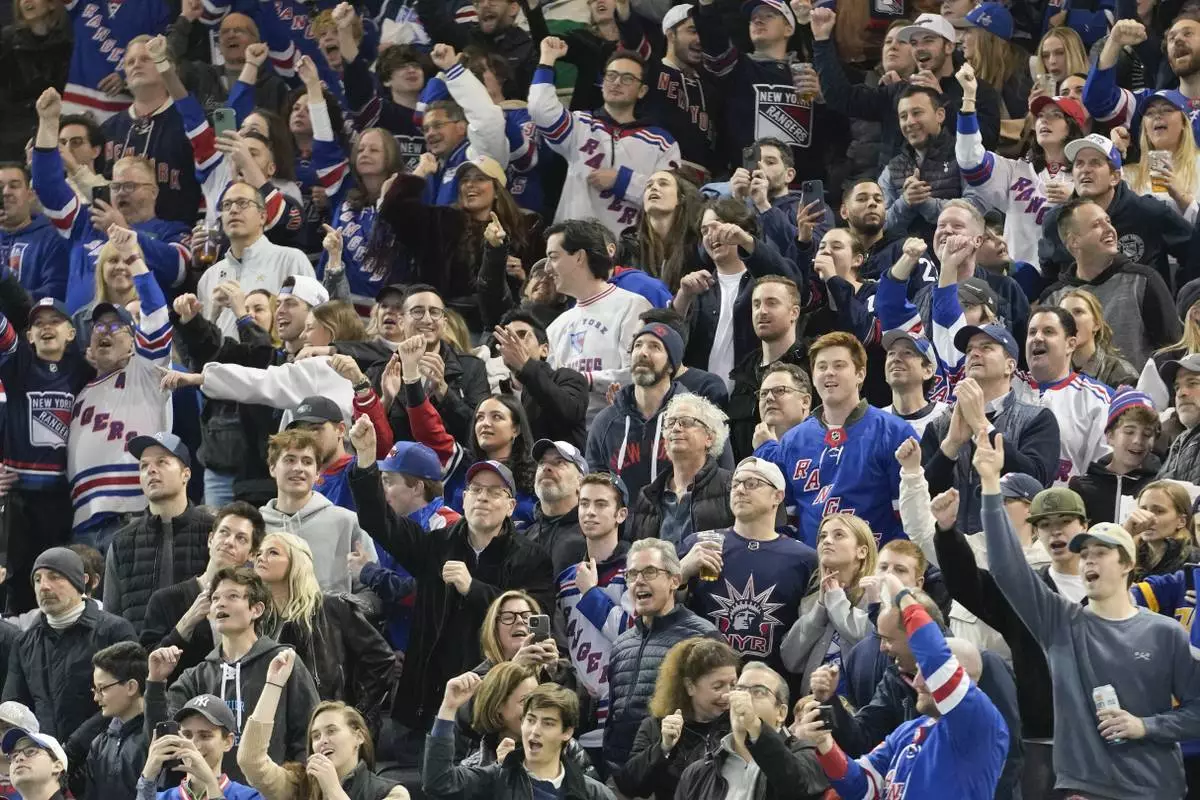
New York Rangers fans celebrate after a goal by center Mika Zibanejad during the second period of an NHL hockey game against the Montreal Canadiens, Sunday, April 7, 2024, at Madison Square Garden in New York. (AP Photo/Mary Altaffer)
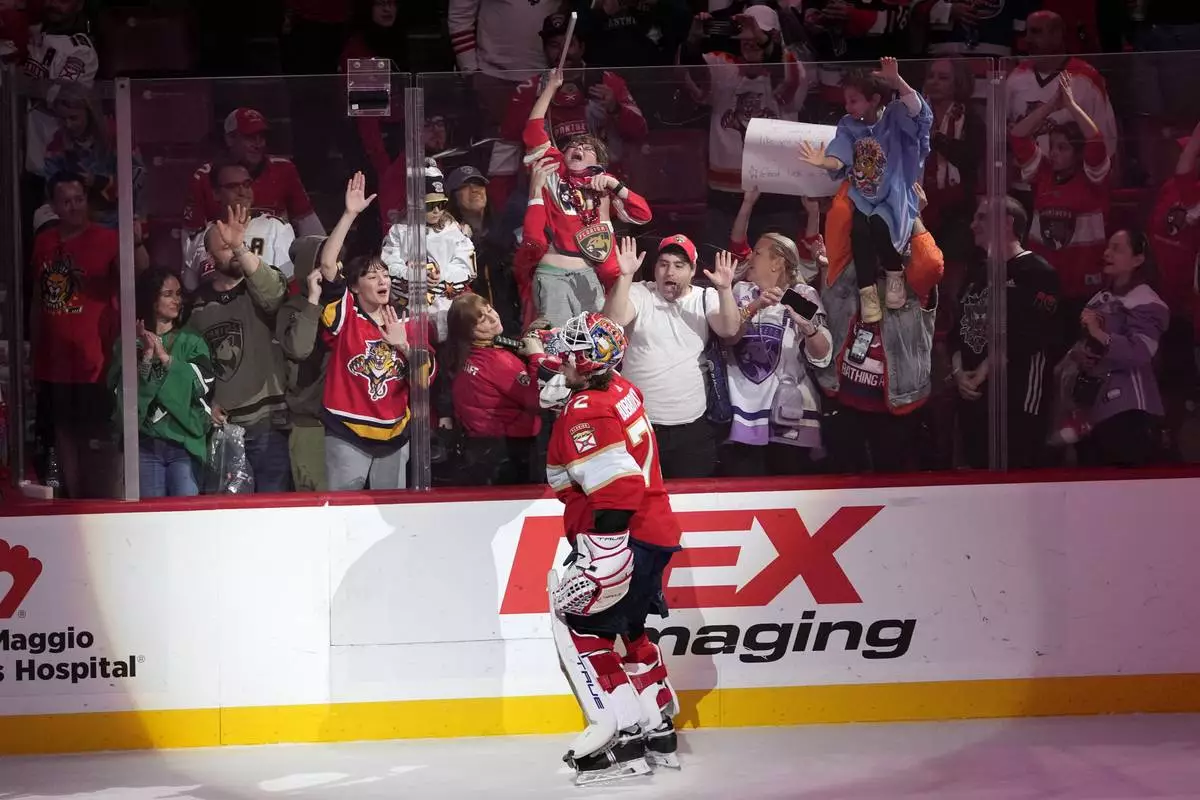
Florida Panthers goaltender Sergei Bobrovsky gives his stick to a fan after the team's NHL hockey game against the Buffalo Sabres, Saturday, April 13, 2024, in Sunrise, Fla. Bobrovsky played in his 700th NHL game. (AP Photo/Lynne Sladky)

Toronto Maple Leafs center Auston Matthews (34) celebrates his goal against the Detroit Red Wings during the second period of an NHL hockey game Saturday, April 13, 2024, in Toronto. (Frank Gunn/The Canadian Press via AP)

FILE - The New York Rangers and fans celebrate a shootout victory over the New York Islanders in an NHL hockey game April 13, 2024, in New York. As the NHL playoffs begins this weekend, ushering in the most exciting hockey of the year, business is booming and the league has bounced back in a big way from the pandemic. (AP Photo/John Munson, File)

































